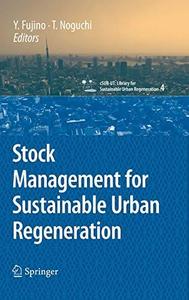
Free Download Stock Management for Sustainable Urban Regeneration By Kazumasa Ozawa (auth.), Y. Fujino, T. Noguchi (eds.)
2009 | 300 Pages | ISBN: 4431740929 | PDF | 34 MB
While the development of material civilization and industrialization initiated by the Industrial Revolution in the eighteenth century made possible a more comfortable life for mankind, it caused a concentration of human resources and led to rapid urbanization around the world. Consequently, a multitude of environmental problems such as global warming, disruption of the e- system, depletion of natural resources, and the accumulation of waste have become international issues. Urbanization accelerated the construction of super high-rise buildings, huge complex facilities, and stacked-up networks of roads and railways. At the same time, however, it resulted in crowded city blocks that were fragile and vulnerable to natural disasters such as ear- quakes, tsunamis, and floods, and in historical structures becoming ruined and cultural urban space exhausted. Maintenance and repair of the amassed stock of structures are causing an economic burden today. Against this background, the Urban Stock Management Research Group in the Center for Sustainable Urban Regeneration (cSUR) at the University of Tokyo has conducted research to develop integrated methods to maintain existing urban assets and to conserve the cultural/social context of urban environments. Urban stock management, such as conservation, utilization, and renovation, is vital for simultaneously supporting urban history, culture, changing lifestyles, and other conflicting elements. Therefore, new en- neering for renovation and utilization of urban stock is urgently required to maintain safety, the environment, and continuing comfort as well as to save natural resources and reduce wastes.
